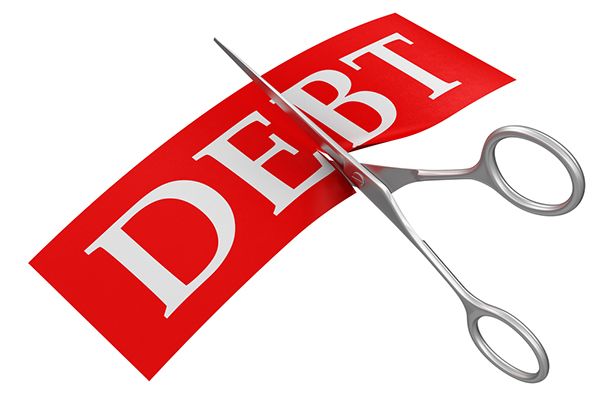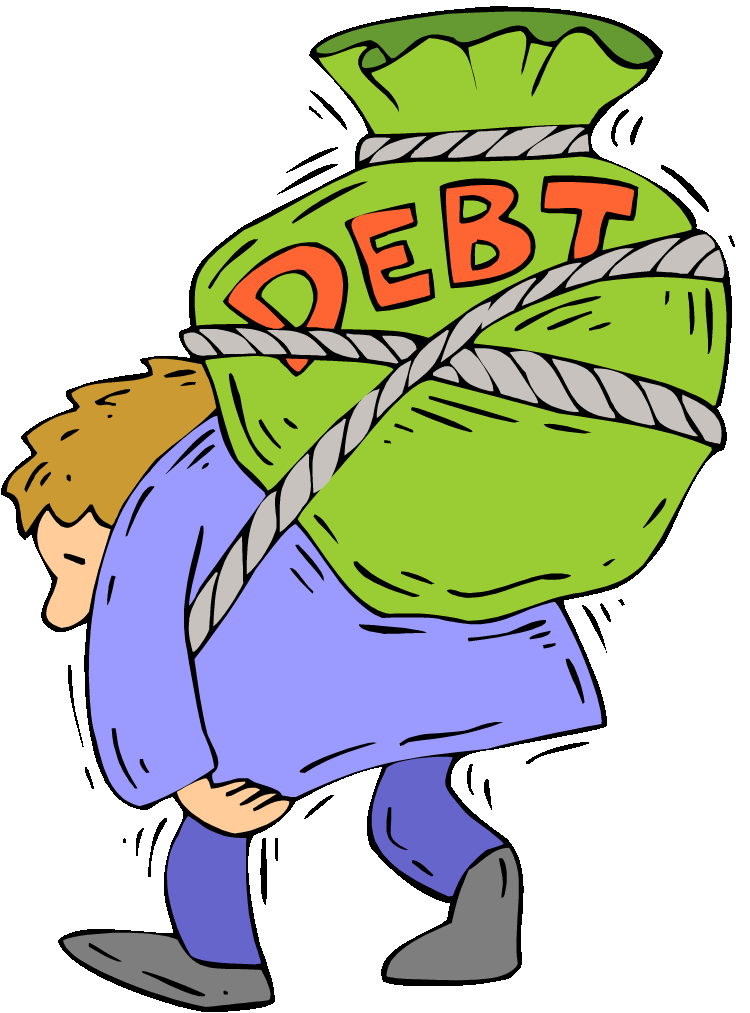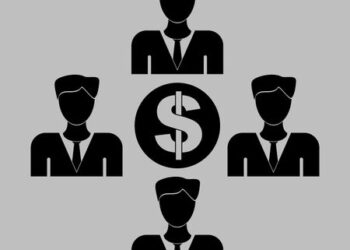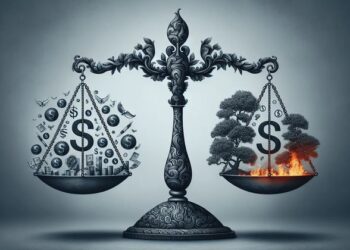In today’s complex economic landscape, many individuals and households grapple with the persistent burden of debt. While often a necessary tool for major life purchases like homes or education, unchecked borrowing can quickly spiral into a source of immense stress and financial instability. Effective debt management isn’t merely about paying off what’s owed; it’s a strategic, multi-faceted process designed to regain control, reduce financial strain, and build a pathway to lasting financial freedom. It involves creating smart recovery plans that are tailored to individual circumstances, focusing on sustainable strategies that not only clear existing obligations but also foster healthier financial habits for the future. Mastering debt management is about transforming financial stress into empowering recovery.
Why Debt Becomes a Burden
Before delving into solutions, it’s crucial to recognize the common pathways to accumulating debt and the psychological and financial impacts it can have. Debt isn’t always a sign of irresponsibility; it’s often a complex interplay of economic factors, life events, and financial habits.
A. Common Causes of Debt Accumulation
Understanding the root causes is the first step toward effective management. Debt can stem from a variety of sources, both predictable and unforeseen.
- Unexpected Life Events: Medical emergencies, job loss, significant home repairs, or unexpected car breakdowns can quickly deplete savings and force reliance on credit. These unforeseen circumstances often act as a sudden catalyst for debt.
- Over-reliance on Credit: The ease of accessing credit cards and loans can lead to overspending, particularly on discretionary items. The “buy now, pay later” mentality, coupled with aggressive marketing, often encourages spending beyond one’s means.
- High Interest Rates: Credit cards, in particular, often carry exorbitant interest rates (e.g., 18-25% APR or even higher). While minimum payments may seem manageable, a large balance can grow exponentially due to compounding interest, making it difficult to pay down the principal.
- Lack of Financial Literacy: Many individuals lack fundamental understanding of budgeting, interest calculation, compound interest, and the true cost of debt. This knowledge gap can lead to poor financial decisions.
- Educational Expenses: The rising cost of higher education often necessitates significant student loan debt, which can be a heavy burden for years, impacting financial flexibility long after graduation.
- Mortgage and Auto Loans: While typically considered ‘good debt’ (as they finance appreciating or essential assets), these can become problematic if the loan terms are unfavorable, income decreases, or interest rates fluctuate unfavorably.
- “Keeping Up with the Joneses”: Societal pressure and consumerism can lead individuals to spend beyond their means to maintain a certain lifestyle or acquire goods perceived as status symbols, fueling impulse purchases and credit reliance.
B. The Multifaceted Impact of Debt
The burden of debt extends far beyond mere financial figures, affecting mental, emotional, and physical well-being.
- Financial Strain and Limited Options: High debt levels reduce disposable income, making it difficult to save for emergencies, retirement, or future goals. It limits financial flexibility and opportunities for wealth building.
- Psychological Stress and Anxiety: Constant worry about payments, calls from creditors, and the feeling of being trapped can lead to chronic stress, anxiety, depression, and even sleep disorders. Debt is a leading cause of mental health issues.
- Damaged Credit Score: Missed payments, high credit utilization, and collection accounts severely damage one’s credit score. A poor credit score impacts access to future loans, mortgages, rental agreements, and even employment opportunities.
- Relationship Strain: Financial difficulties are a leading cause of marital and family discord. Debt-related stress can lead to arguments, mistrust, and resentment within relationships.
- Reduced Quality of Life: The constant pressure can lead to sacrifices in essential areas like healthcare, nutrition, or leisure activities, diminishing overall quality of life. The inability to pursue personal interests or social engagements can lead to isolation.
- Legal Consequences: In extreme cases, unmanaged debt can lead to legal actions, wage garnishments, property liens, or even bankruptcy, with severe long-term consequences.
Recognizing these impacts underscores the vital importance of proactive and effective debt management strategies. It’s not just about numbers; it’s about reclaiming peace of mind and financial health.
Foundational Pillars of Smart Debt Recovery Plans
A robust debt management strategy is built upon several core principles and actionable steps. These pillars provide a structured approach to tackling debt systematically.
A. Comprehensive Debt Assessment and Budgeting
The first and most critical step is to gain a clear, honest picture of your entire financial situation. You cannot manage what you do not measure.
- List All Debts: Create a detailed list of every debt you owe. For each debt, include:
- Creditor Name: Who you owe the money to.
- Current Balance: The total amount outstanding.
- Interest Rate (APR): The annual percentage rate, as this is crucial for prioritization.
- Minimum Monthly Payment: The lowest amount required each month.
- Due Date: When the payment is due.
- Type of Debt: Credit card, personal loan, student loan, mortgage, auto loan, etc.
- Secured vs. Unsecured: Whether the debt is backed by collateral.
- Analyze Your Income and Expenses (Budgeting): Develop a realistic, detailed budget that tracks all your income sources and every single expense. Categorize expenses into fixed (rent, loan payments) and variable (groceries, entertainment).
- Identify Disposable Income: The goal is to find out exactly how much money is left over after essential expenses, which can then be allocated to accelerate debt repayment.
- Pinpoint Unnecessary Spending: This exercise often reveals areas where spending can be reduced or eliminated, freeing up additional funds for debt.
- Calculate Debt-to-Income Ratio: Understand your debt burden relative to your income. A high ratio indicates significant financial strain and highlights the urgency of a strong debt plan.
- Understand Your Credit Score: Obtain a free copy of your credit report and score. This provides a baseline and helps identify any inaccuracies. A higher score can be leveraged for better debt consolidation options.
This comprehensive assessment forms the bedrock of any effective debt recovery plan, providing the data needed for informed decision-making.
B. Prioritization Strategies: Attack Debt Systematically
Once you know what you owe, the next step is to decide which debts to tackle first. There are two primary strategies, each with its own benefits.
- Debt Snowball Method (Psychological Win):
- Process: List all debts from the smallest balance to the largest. Make minimum payments on all debts except the smallest one. Throw all extra money at the smallest debt until it’s paid off. Once cleared, take the money you were paying on that debt and add it to the minimum payment of the next smallest debt.
- Benefit: Provides quick psychological wins as you eliminate smaller debts rapidly, building momentum and motivation. This method is highly effective for those who need consistent encouragement to stay on track.
- Downside: You might pay more in total interest over time compared to the avalanche method, as it doesn’t prioritize high-interest debts.
- Debt Avalanche Method (Financial Optimization):
- Process: List all debts from the highest interest rate to the lowest. Make minimum payments on all debts except the one with the highest interest rate. Throw all extra money at the highest-interest debt until it’s paid off. Once cleared, take the money you were paying on that debt and add it to the minimum payment of the next highest-interest debt.
- Benefit: Saves the most money on interest over the long run, leading to the fastest overall debt elimination. This is the mathematically optimal strategy.
- Downside: Can be demotivating if your highest-interest debt is also a very large balance, as it might take longer to see the first debt completely eliminated.
- Hybrid Approach: Some individuals combine both, using the snowball for the first couple of very small debts to build initial momentum, then switching to the avalanche for the remaining larger, high-interest ones.
C. Increasing Repayment Capacity: Finding More Funds
To accelerate debt repayment, you generally need to free up more money. This involves either earning more or spending less.
- Reduce Expenses (Aggressively): Review your budget meticulously for areas where you can cut back.
- Discretionary Spending: Cut down on dining out, entertainment, subscriptions, and non-essential purchases.
- Negotiate Bills: Call service providers (internet, cable, phone) to negotiate lower rates or switch to cheaper plans.
- Find Alternatives: Cook more at home, pack lunches, use public transport, or find cheaper alternatives for hobbies.
- Temporary Sacrifices: Consider temporary extreme measures, such as pausing vacations or large purchases, until significant debt is cleared.
- Increase Income (Proactively): Look for ways to bring in more money.
- Side Hustle: Take on a part-time job, freelance work, or monetize a hobby.
- Overtime: If applicable, work extra hours at your current job.
- Sell Unused Items: Declutter your home and sell items you no longer need (clothes, electronics, furniture).
- Ask for a Raise: If your performance warrants it, negotiate a higher salary.
- Job Change: Consider a higher-paying job if your current one offers limited growth.
- Sell Assets (If Necessary): For severe debt, consider selling non-essential assets like a second car, luxury items, or even downsizing your home, as a last resort to make a significant dent in your debt.
D. Debt Consolidation and Refinancing: Optimizing Interest and Payments
Once you’ve assessed your debt and committed to increasing repayment, look for ways to optimize the debt itself.
- Debt Consolidation Loan: This involves taking out a new, lower-interest loan to pay off multiple existing debts (especially high-interest credit card debts).
- Benefits: Simplifies payments (one monthly payment instead of many), potentially lowers overall interest, and provides a fixed repayment schedule.
- Considerations: Requires good credit for favorable terms. If you don’t address spending habits, you could accumulate new debt on cleared credit cards.
- Balance Transfer Credit Card: Transferring high-interest credit card balances to a new card with a 0% introductory APR for a promotional period (e.g., 12-24 months).
- Benefits: Allows you to pay down principal aggressively without interest accrual for a period.
- Considerations: Requires good credit. Be mindful of balance transfer fees (typically 3-5%). Crucially, you must pay off the balance before the promotional period ends or face high deferred interest. Avoid making new purchases on the card.
- Refinancing Loans (Mortgage, Auto, Student):
- Mortgage Refinance: Replacing your existing home loan with a new one, potentially with a lower interest rate or shorter term, to reduce monthly payments or total interest paid. Consider closing costs.
- Auto Loan Refinance: Similar to mortgage, for your car loan.
- Student Loan Refinance: Consolidating multiple student loans into one new loan, potentially with a lower interest rate or different repayment terms. Be cautious about giving up federal loan protections (like income-driven repayment) if refinancing to a private loan.
These strategies can significantly reduce the cost of debt and make repayment more manageable, but they require discipline to be effective.
Advanced Strategies and Resources for Debt Management
For more complex debt situations or when self-management proves insufficient, specialized resources and advanced strategies can provide critical support.
A. Credit Counseling Agencies
Non-profit credit counseling agencies offer professional, unbiased advice and services to individuals struggling with debt.
- Budget Analysis and Financial Education: Counselors help you analyze your budget, understand your debt, and develop a personalized spending plan. They also provide valuable financial education.
- Debt Management Plans (DMPs): A DMP is offered by credit counseling agencies. They negotiate with your creditors to potentially lower interest rates, waive fees, and set up a single, lower monthly payment to the agency, which then distributes funds to creditors.
- Benefits: Simplifies payments, potentially reduces interest, stops collection calls, and doesn’t directly impact credit score negatively (though it’s noted on your report).
- Considerations: Requires consistent payments. You cannot use credit cards enrolled in the DMP. It’s often for unsecured debt.
- Housing Counseling: Many agencies also offer housing counseling for homeowners facing foreclosure or struggling with mortgage payments.
Always ensure the agency is non-profit and reputable (e.g., accredited by the National Foundation for Credit Counseling – NFCC).
B. Debt Settlement and Debt Relief Companies
Debt settlement companies negotiate with your creditors to pay off a portion of your debt for a lump sum, usually less than the full amount owed. This is a very different and generally riskier approach than credit counseling.
- Process: You stop paying creditors directly and instead pay into a savings account managed by the settlement company. Once enough money accumulates, the company attempts to negotiate a reduced payoff amount with your creditors.
- Benefits (Potential): Can potentially reduce the total amount owed.
- Significant Risks and Downsides:
- Severe Credit Damage: Your credit score will take a massive hit as you intentionally stop making payments, resulting in missed payment notations and charge-offs.
- Collection Calls Intensify: Creditors are likely to intensify collection efforts and may pursue legal action during the negotiation period.
- Taxable Income: Any forgiven debt over a certain amount is typically considered taxable income by the IRS.
- High Fees: Debt settlement companies charge significant fees, often a percentage of the settled amount.
- No Guarantee: There’s no guarantee creditors will agree to settle, and some may refuse to negotiate.
- Scams: The industry has a history of fraudulent companies. Extreme caution is advised.
Debt settlement should generally be considered a last resort before bankruptcy and after exhausting all other options.
C. Bankruptcy: A Final Resort
Bankruptcy is a legal process that allows individuals or businesses unable to repay their debts to obtain relief. It has severe long-term consequences and should only be considered after consulting with a qualified attorney.
- Chapter 7 (Liquidation): Debts are discharged (wiped out) after certain non-exempt assets are sold to pay creditors. It’s typically for those with limited income and assets.
- Chapter 13 (Reorganization): A repayment plan is established for three to five years, allowing individuals with regular income to keep their assets while paying off a portion of their debts.
- Impact: Stays on your credit report for 7-10 years, making it very difficult to obtain new credit, loans, or even housing. It should only be considered as a last resort when other options are exhausted and a path to repayment is impossible.
D. Home Equity Loans and Lines of Credit (HELOCs)
For homeowners, leveraging home equity can be a way to consolidate debt, but it comes with significant risk.
- Home Equity Loan: A lump sum loan secured by your home, typically with a fixed interest rate.
- Home Equity Line of Credit (HELOC): A revolving line of credit, also secured by your home, with a variable interest rate.
- Benefits: Often offer lower interest rates than unsecured debt (like credit cards) because your home acts as collateral.
- Significant Risk: If you fail to repay, you risk losing your home. This strategy is only advisable if you have a stable income, can commit to repayment, and use the funds strictly for debt consolidation, not for new spending.
Building Long-Term Financial Resilience: Beyond Debt Elimination
Paying off debt is a monumental achievement, but a truly smart recovery plan extends beyond elimination. It’s about building habits and structures that prevent future debt accumulation and foster lasting financial well-being.
A. Establishing a Robust Emergency Fund
Once high-interest debt is gone, or even while aggressively paying it down, prioritize building an emergency fund.
- Purpose: This fund acts as a financial safety net for unexpected expenses (job loss, medical bills, car repairs) that might otherwise force you back into debt.
- Target: Aim for at least 3-6 months’ worth of essential living expenses stored in a separate, easily accessible savings account. For higher job insecurity or family responsibilities, aim for 6-12 months.
- Prevents Debt Recurrence: An emergency fund is your primary defense against falling back into the debt trap.
B. Cultivating Responsible Spending Habits and Budgeting Discipline
Long-term financial health hinges on consistently disciplined spending.
- Adhere to Your Budget: Treat your budget as a living document. Review it regularly, adjust as needed, and ensure you’re living within or below your means.
- Distinguish Needs vs. Wants: Consciously evaluate purchases. Prioritize needs (housing, food, utilities, transportation) over wants (luxury items, frequent dining out, impulse purchases).
- Delay Gratification: Practice delaying non-essential purchases. Often, the desire for an item fades, or you find a cheaper alternative.
- Avoid Lifestyle Creep: As your income increases, resist the urge to immediately inflate your lifestyle. Instead, direct additional funds towards savings, investments, or accelerating loan payments.
C. Smart Use of Credit: Building vs. Abusing
Credit is a tool; it can build or destroy financial stability depending on how it’s used.
- Pay Bills on Time, Every Time: This is the single most important factor for a healthy credit score. Set up automatic payments to avoid missed due dates.
- Keep Credit Utilization Low: Aim to use no more than 30% (ideally 10% or less) of your available credit limit on revolving accounts. High utilization negatively impacts your score.
- Review Credit Report Regularly: Check your credit report annually for free from all three bureaus (Equifax, Experian, TransUnion) to spot errors and identity theft.
- Strategic Credit Building: If you have no credit or damaged credit, consider a secured credit card or a small credit builder loan to establish a positive payment history.
- Avoid Unnecessary New Debt: Before taking on any new loan or credit card, ask if it’s truly essential and if you can comfortably afford the payments.
D. Investing for the Future: Building Wealth
Once stable and debt-free (excluding manageable mortgages), shift focus to building wealth through investments.
- Retirement Accounts: Maximize contributions to tax-advantaged retirement accounts like 401(k)s, IRAs, and Roth IRAs. Take advantage of employer matching programs if available.
- Diversified Portfolio: Invest in a diversified portfolio of stocks, bonds, and other assets appropriate for your risk tolerance and financial goals. Consider low-cost index funds or ETFs.
- Financial Goals: Set clear financial goals beyond debt repayment, such as saving for a down payment, a child’s education, or starting a business, and create investment plans to achieve them.
- Continuous Learning: Continue educating yourself about personal finance, investing, and economic trends to make informed decisions.
E. Regular Financial Check-ups and Adjustments
Financial planning is not a one-time event; it’s an ongoing process.
- Annual Review: Conduct an annual financial check-up. Review your budget, debt repayment progress, investment performance, and overall financial goals.
- Adjust as Needed: Life circumstances change (income, expenses, family size). Be prepared to adjust your budget and financial plan accordingly.
- Seek Professional Advice: For complex situations, consider consulting a certified financial planner (CFP) who can provide personalized guidance.
Conclusion
The journey out of debt can be challenging, but with a well-structured and disciplined approach, it is an entirely achievable goal. Effective debt management is more than just a temporary fix; it’s a strategic pathway to reclaiming financial control, reducing stress, and building a foundation for lasting wealth and security.
It begins with an honest, comprehensive assessment of your current financial state, followed by the adoption of systematic repayment strategies like the debt snowball or avalanche methods. Complementing these are proactive steps to increase repayment capacity through smart spending reductions and income generation. For more complex situations, leveraging professional resources such as non-profit credit counseling agencies or exploring consolidation and refinancing options can provide crucial support.
However, true mastery of debt management extends beyond mere elimination. It’s about cultivating robust financial resilience through the establishment of emergency funds, disciplined budgeting, responsible credit utilization, and strategic long-term investing. By embracing these principles, individuals can not only shed the shackles of debt but also forge healthier financial habits that pave the way for a future of stability, opportunity, and genuine financial freedom. It’s an empowering transformation, leading to a life where financial well-being is not a dream, but a lived reality.















